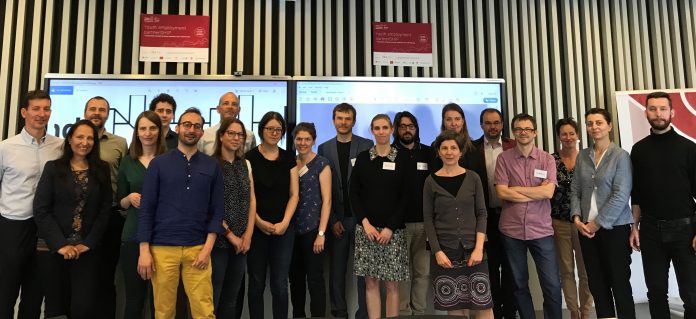The EU Youth Employment Initiative has provided ample funding for labour market programmes for youth, and has also encouraged research on the impact of these programmes. The seminar aimed to create a forum for analysts and policy-oriented academic researchers to have an in-depth discussion of the recent evidence on youth programmes, focusing especially on labour markets where (1) youth unemployment or the NEET rate is average or high and there is a fairly large subgroup of vulnerable youth who struggle to enter the labour market and/or where (2) the public employment service is not very efficient /effective.
Discussions at the seminar focused on lessons for policy design – on what works well, why-, as well as on data and methodology, especially the potential use of administrative data for counterfactual quantitative evaluations.
Keynote speakers included Jochen Kluve (Head of Evaluation at the KfW Development Bank and Professor of Economics at Humboldt-Universität zu Berlin), Sarah Kups (Economist at the Directorate for Employment, Labour and Social Affairs of the OECD) and Anne Lauringson (Labour Market Economist of the same Directorate of the OECD). Participants represented academic institutions as well as public and private organisations engaged in policy analysis, coming from ten countries (Bg, BiH, Cz, Cr, De, Ee, Hu, Pl, Sk and Si).
In their keynotes, Sarah Kups sketched an overview of the current state of NEETs in Europe, Jochen Kluve reviewed the evidence on what policies work, while Anne Lauringson described the potential in using administrative data for deepening the evidence base. The country-specific presentations provided very thought- provoking details on the design features and effectiveness of particular active labour market policies (ALMP) for youth, implemented in Central and Eastern European countries.
The lively discussions during the seminar generated several insights that may contribute to improving the effectiveness of ALMP.
1. The institutional context in Central and Eastern Europe seems to magnify the usual risks in designing and implementing ALMP. There are strong incentives to focus on short term effects and on absorbing EU funding rather than maximising the impact of social investments. Also, decisions on how to allocate ALMP tend to be fairly rigid, so that PES are often recruiting jobseekers for particular programmes in order to meet pre-set targets, rather than focusing on the needs of the jobseeker and finding what may be the best way to help them. In some cases, e.g., for youth lacking basic skills, fast reemployment may not be a desirable short-term outcome, but many ALMP monitoring systems in the CEE lack tools and indicators for measuring interim progress in employability, such as in motivation or skills levels.
Performance targets that set the number of placements to be achieved without controlling for the characteristics of ALMP participants (or labour demand) put pressure on PES to offer ALMP to the more employable jobseekers and direct the others to remedial programmes such as public works. Such cream skimming harms equity by barring those who need them most from accessing these programmes. It may also lower efficiency as, research shows that the net effect of ALMP tends to be larger for less employable jobseekers.
One way to avoid or mitigate creaming may be to set employment targets over a longer time period (e.g., within 12 months rather than 6 months), or to set separate (lower) targets for less employable groups and define expected placements as a percentage of participants rather than the number of persons to be placed.
2. Many youths not in education, training or employment (NEET) have no contact with the PES. Seminar participants identified several possible reasons behind this. One of these flows from poorly functioning PES performance management systems: if PES are evaluated mainly on the number of jobseekers successfully placed, they have an incentive to focus on those most employable and will make less effort to reach out to those who may be more difficult to place. Insufficient resources and a limited range of services also tends to reduce the ability and motivation of PES for outreach activities. Youth themselves may be demotivated from visiting the PES by a lack of trust or low expectations about the potential quality of the services they may receive.
The remedy may include administrative incentives, such as offering health insurance (or a small cash benefit) to all who register with the PES or improving referral mechanisms and cooperation with other public institutions, especially with schools. The administrative incentives may imply that the PES may need to service an extended pool of formally registered unemployed, some of whom may not be wanting or looking for work, but the corresponding workload may be reduced by using automated, digital tools. Such efforts are obviously more effective if incentives in the PES performance management system as well as PES resources are adjusted accordingly. PES staff may also need training in how to find and how to motivate vulnerable NEETs.
Many NEET youths are poorly educated and are lacking basic skills and most PES in CEE are not equipped to give them sufficient support. PES would need more capacity as well as better quality and a wider range of services: tools to assess the lacking skills, training in these skills, mentoring to sustain the motivation of youth, and varied measures to tackle any further barriers to employment. Accordingly, empirical evidence on the effectiveness of counselling, mentoring and basic skills training (which have proven to work in countries with well-developed PES) is sorely lacking in the region. In some countries, NGOs could support the PES in providing some of these services or to supplement PES capacities. However, several participants noted that involving NGOs may only work well if PES can engage them in a transparent contractual framework and a systematic checking of quality.


